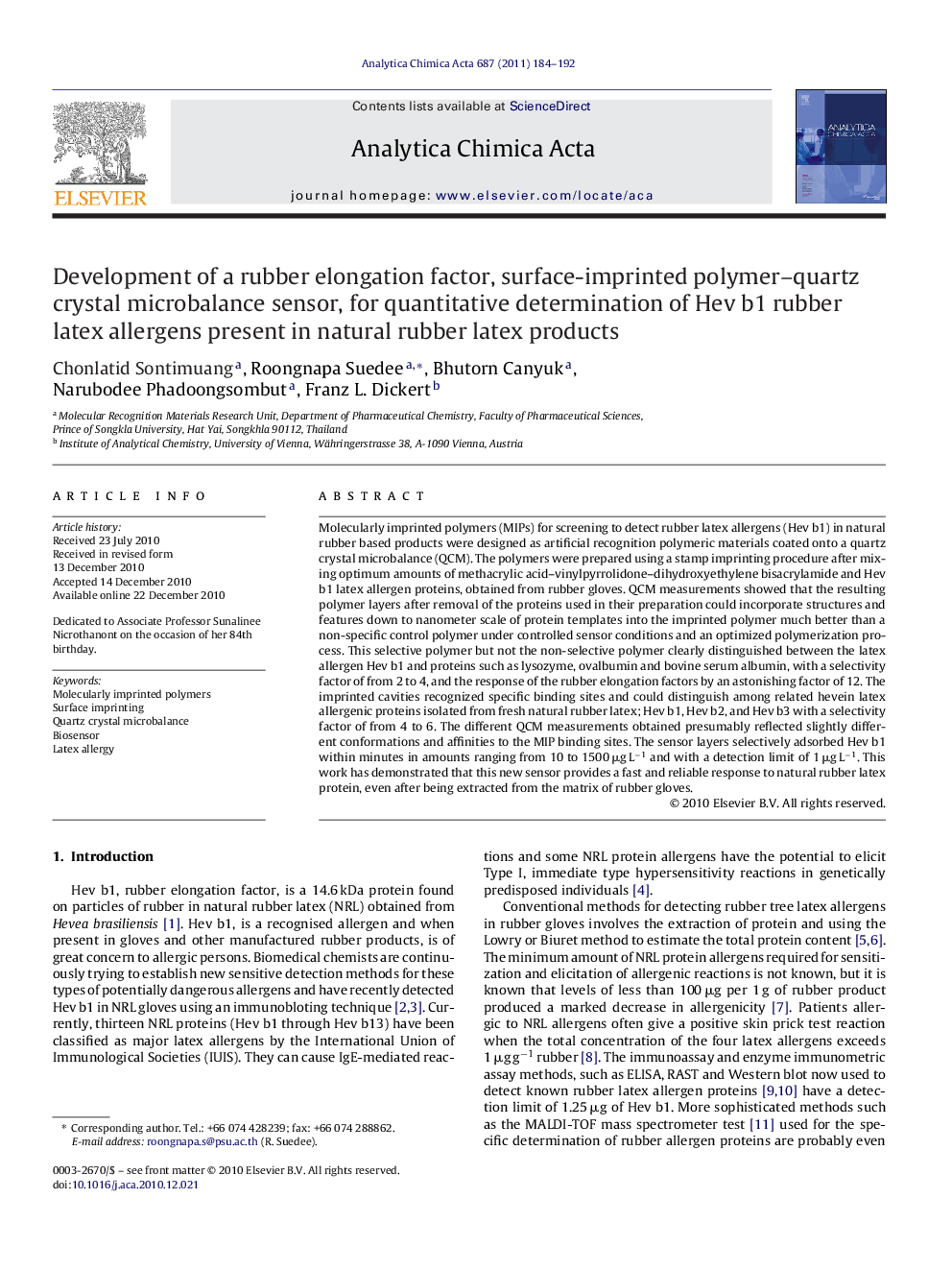| کد مقاله | کد نشریه | سال انتشار | مقاله انگلیسی | نسخه تمام متن |
|---|---|---|---|---|
| 1167792 | 960560 | 2011 | 9 صفحه PDF | دانلود رایگان |

Molecularly imprinted polymers (MIPs) for screening to detect rubber latex allergens (Hev b1) in natural rubber based products were designed as artificial recognition polymeric materials coated onto a quartz crystal microbalance (QCM). The polymers were prepared using a stamp imprinting procedure after mixing optimum amounts of methacrylic acid–vinylpyrrolidone–dihydroxyethylene bisacrylamide and Hev b1 latex allergen proteins, obtained from rubber gloves. QCM measurements showed that the resulting polymer layers after removal of the proteins used in their preparation could incorporate structures and features down to nanometer scale of protein templates into the imprinted polymer much better than a non-specific control polymer under controlled sensor conditions and an optimized polymerization process. This selective polymer but not the non-selective polymer clearly distinguished between the latex allergen Hev b1 and proteins such as lysozyme, ovalbumin and bovine serum albumin, with a selectivity factor of from 2 to 4, and the response of the rubber elongation factors by an astonishing factor of 12. The imprinted cavities recognized specific binding sites and could distinguish among related hevein latex allergenic proteins isolated from fresh natural rubber latex; Hev b1, Hev b2, and Hev b3 with a selectivity factor of from 4 to 6. The different QCM measurements obtained presumably reflected slightly different conformations and affinities to the MIP binding sites. The sensor layers selectively adsorbed Hev b1 within minutes in amounts ranging from 10 to 1500 μg L−1 and with a detection limit of 1 μg L−1. This work has demonstrated that this new sensor provides a fast and reliable response to natural rubber latex protein, even after being extracted from the matrix of rubber gloves.
Journal: Analytica Chimica Acta - Volume 687, Issue 2, 21 February 2011, Pages 184–192